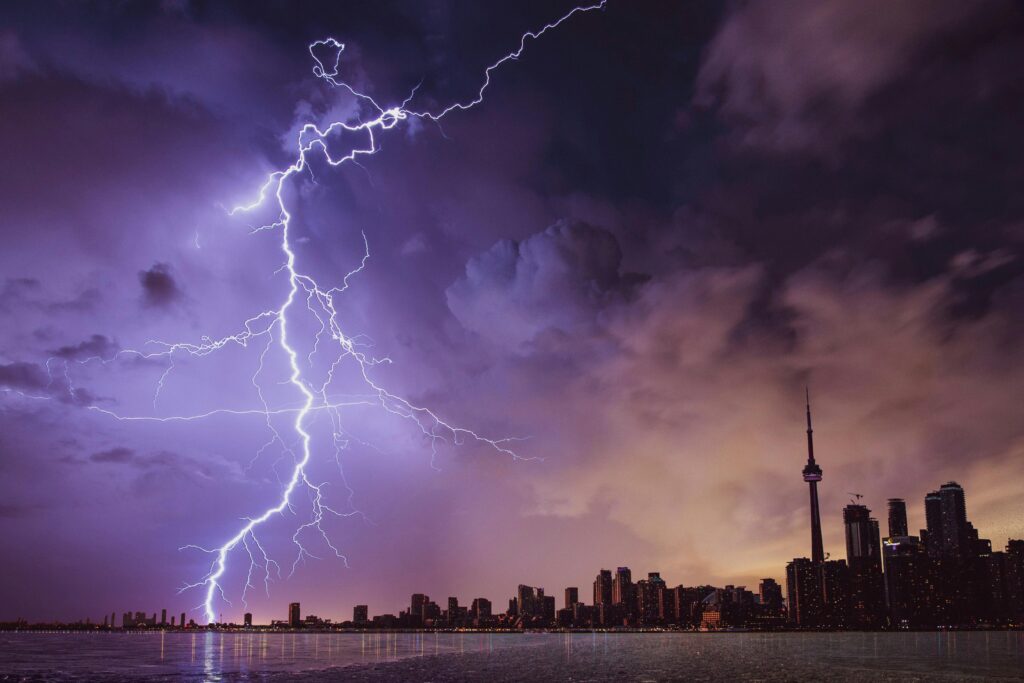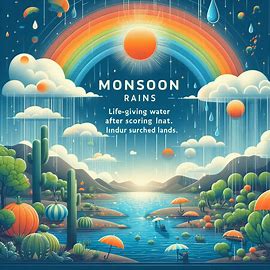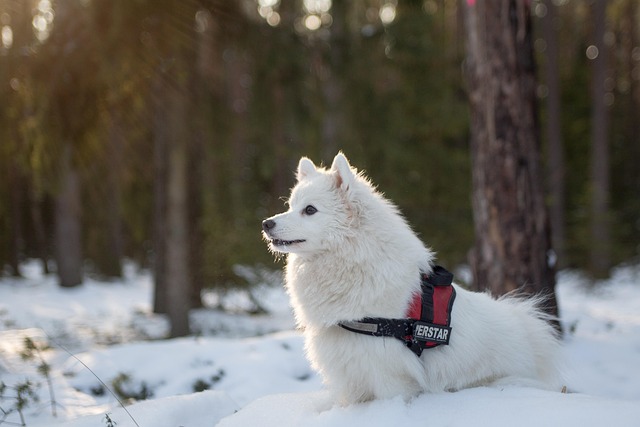Monsoon: Dance of Rain and Renewal in2025
1 . Monsoons, those dramatic seasonal shifts in wind patterns that bring heavy rains, are fascinating meteorological phenomena. Let’s explore the primary monsoon regions:
- South Asia: The most prominent monsoons occur here. Countries like India, Bangladesh, Pakistan, and Sri Lanka experience intense monsoonal rains from June to September. The Himalayas play a crucial role in enhancing the South Asian monsoon by blocking dry air from the north.
- Southeast Asia: Vietnam, Thailand, Cambodia, Laos, and parts of China witness monsoonal rains during the same period as South Asia.
- Australia: The northern end of Australia experiences monsoons from December to February, while South Asia has dry monsoon conditions during this time.
- Americas: Monsoons occur in parts of North America (such as the Gulf Coast), Central America, and South America. However, they tend to be weaker than in other regions1
- Africa: The region just south of the Sahara Desert, known as the Sahel, experiences a classic monsoon. It has a seasonally wet and dry pattern.
Remember, monsoons are essential for replenishing water sources, supporting agriculture, and shaping ecosystems.
2 . Wisdom Behind:
- Monsoon rains bring life-giving water after scorching heat. They replenish parched lands.
- The Creator’s wisdom lies in balancing drought and abundance.

Monsoon
3 . Monsoon Charming Beauties
- Lotus leaves float on rain-filled ponds.
- Peacocks spread their iridescent feathers.
- Waterfalls cascade down lush hills.
4 . Utilities:
- Seasonal Harvesting: Paddy fields yield rice.
- Fruits Ripening: Jackfruits, litchis, and guavas thrive.
- Socio-Cultural Importance: Monsoon festivals celebrate rain’s arrival, like Kerala’s Onam.
Monsoon is a fascinating season with its own set of myths and facts. Let’s explore some common misconceptions and interesting truths related to monsoons:
5 . Monsoon Myth: Getting Drenched in the Rain Causes a Cold
- Monsoon Myth: Getting Drenched in the Rain Causes a Cold:
- Fact: Contrary to popular belief, getting drenched in the rain itself does not cause a cold. The real culprit is the sudden temperature change.
- Explanation: Our bodies adapt to hot and humid weather, creating an immune system suitable for those conditions. When the rain arrives, the sudden temperature drop can make us susceptible to illnesses.
Precaution: Wear appropriate clothing during monsoons to avoid sudden temperature shifts
- Myth: Daily Use of Raincoats Is Unhygienic:
- Fact: Raincoats are essential for staying dry during monsoons. They act as a barrier against rain-related infections.
- Hygiene: To maintain hygiene, clean your raincoat daily. Dust and particles accumulate on its surface due to rainwater tension. Regular cleaning ensures maximum safety1.
- Myth: Raincoats Are Uncomfortable for Travel:
- Fact: Raincoats are reliable travel companions during monsoons.
- Comfort: They keep you dry and protect you from rain-related illnesses.
- Tip: Opt for stylish rainwear like ZEEL Rainwear to stay both comfortable and fashionable1.
Remember, understanding the facts behind monsoon myths helps us make informed choices and stay healthy during this rainy season! 1
6 . The Monsoon Season Holds Immense Cultural Significance in Various Regions Around the World. Let’s Explore How Monsoons Impact Different Cultures:
- India and South Asia:
- Agriculture: Monsoons are crucial for agriculture. The arrival of the summer monsoon brings relief from scorching heat and replenishes water sources. Farmers eagerly await the rains to sow crops like rice, wheat, and sugarcane.

- Festivals: Monsoons are celebrated through festivals like Teej, where women pray for marital bliss and prosperity. The Rath Yatra (chariot festival) in Puri, Odisha, coincides with the monsoon season.
- Art and Music: Monsoons inspire classical music ragas and traditional dance forms like Kathak and Bharatanatyam.
- Agriculture: Monsoons are crucial for agriculture. The arrival of the summer monsoon brings relief from scorching heat and replenishes water sources. Farmers eagerly await the rains to sow crops like rice, wheat, and sugarcane.
- Southeast Asia:
- Rice Cultivation: Countries like Thailand, Vietnam, and Indonesia heavily rely on monsoons for rice cultivation. The wet season ensures bountiful harvests.
- Water Festivals: Monsoons are celebrated with water festivals like Songkran in Thailand and Bun Pi Mai in Laos.
- Middle East:
- Date Palm Cultivation: Monsoons are essential for date palm cultivation in countries like Saudi Arabia and Oman.
- Traditional Architecture: Mud-brick architecture in desert regions is designed to capture and store rainwater during monsoons.
- Africa:
- Agriculture and Livestock: Monsoons impact agriculture and pastoral communities across Africa. Livestock depend on fresh grazing lands.
- Cultural Practices: Rain dances and rituals are performed to invoke monsoons.
- South America:
- Amazon Rainforest: The Amazon rainforest receives heavy rainfall during monsoons, sustaining its rich biodiversity.
- Indigenous Traditions: Indigenous tribes celebrate monsoons through rituals and ceremonies.
- Global Impact:
- Climate Change: Research on monsoons helps us understand climate change patterns and their effects on regions worldwide.
In summary, monsoons are not just meteorological events; they shape cultures, traditions, and livelihoods across continents. Their arrival is eagerly awaited and celebrated, making them a unifying force in our diverse world. 1234
7 . The Monsoon Season Indeed Brings its Share of Challenges! Tips to Help You Navigate Through This Unpredictable Weather:
- Stay Informed: Regularly check weather forecasts before heading outdoors. Keep an eye on the sky for signs of approaching storms. If a severe thunderstorm warning is issued, consider postponing outdoor activities to avoid dangerous situations1.
- Dust Storms: Dust storms can suddenly reduce visibility, making driving hazardous. If you encounter dense dust blowing across the road, pull your vehicle off the pavement, turn off lights, and set the emergency brake. Avoid stopping on the traveled portion of the roadway1.
- Downbursts/Damaging Winds: Be aware of severe thunderstorm watches. These conditions can lead to widespread thunderstorms with damaging winds. If you’re hiking during the monsoon, know your escape routes and follow ranger instructions1.
- Flight Safety: If you’re flying during monsoon season, closely monitor weather forecasts, adjust schedules, and implement additional safety measures2.
- Farmers’ Adaptation: Accurate monsoon forecasts can help farmers decide what and when to plant. Nearly two-thirds of the global population lives in monsoon-affected regions, so reliable forecasts are crucial3.
Remember to stay prepared, and prioritize safety during this dynamic season! 123
8 . Monsoons can be Challenging for Homes, but with Some Proactive Steps, You can Minimize Potential Damage. Here are Seven Essential Tips for Weatherproofing your Home During the Monsoon Season:
- Seal Doors and Windows: Cracks around doors and windows allow water and dust to enter. Use caulk or weatherstripping tape to seal these gaps. Not only will this keep your home dry, but it’ll also help maintain your air-conditioned environment1.
- Check Your Gutters: Clean out clogged gutters to prevent overflow. Proper drainage away from your home’s foundation is crucial. Sandy soil doesn’t absorb water well, so ensure downspouts direct water away from your house1.
- Protect Your AC System: Dust and plant debris can hinder your outdoor AC unit. Replace the air filter during the monsoon season to filter out dust. Consider professional installation to elevate the unit and protect against flood damage1.
- Inspect Your Roof: Cracked tiles or peeling shingles can lead to leaks. Even minor roof leaks can damage your attic or ceiling during heavy rains. Trim overhanging tree branches to prevent damage1.
- Label Your Breaker Box: Storms may cause power outages. Label your breaker box for easy access. If flooding occurs, never touch the breaker box—call your utility company instead1.
- Check Yard Grading: If your yard slopes toward your house, it increases flood risk. Install a retaining wall and drainpipe to redirect water away from your home1.
- Secure Outdoor Furniture: Move outdoor furniture away from windows and walls to prevent water damage. Additionally, consider using bamboo or cane rugs and furniture, which are more resistant to moisture2.
Remember, a little preparation goes a long way in safeguarding your home during monsoons! 12
9 . Waterproofing Walls and Floors is Essential to Protect Your Home From Water Damage, Especially in Areas like Bathrooms and Basements. Let’s Explore Some Effective Solutions:
- Bathroom Waterproofing:
- Membranes: Use waterproofing membranes or liquid compounds. These create a tight seal over surfaces, preventing water penetration1.
- Tiles: Install ceramic or porcelain tiles on walls and floors. Tiles naturally repel moisture and enhance aesthetics2.
- Sealing Joints: Apply waterproof sealant or silicone caulk to joints and corners where walls meet the floor or fixtures3.
- Basement Waterproofing:
- Identify Water Sources: Determine where water is coming from—cracks, corners, or other vulnerable points4.
- Choose Materials: Opt for waterproofing membranes, liquid compounds, or cementitious coatings5.
- Surface Preparation: Clean and prepare the surface, ensuring it’s dry and debris-free5.
- Primer Application: Apply primer for better adhesion of the waterproofing material5.
- Seal Joints: Thoroughly seal joints between walls and floors to prevent water seepage5.
Remember, proper waterproofing ensures a durable, moisture-free environment in your home! 4251
10. When it Comes to Eco-friendly Waterproofing, there are Several Sustainable Options to Consider:
- Organic Cotton with Water-Resistant Coatings: Organic cotton, grown without synthetic pesticides and fertilizers, can be treated with eco-friendly water-resistant coatings. This combination creates a material that repels water while remaining gentle on the planet1.
- Recycled Polyester and Nylon: These materials repurpose plastic waste into high-quality fibers. By using recycled materials, you contribute to reducing plastic pollution while enjoying waterproof clothing1.
- Biodegradable Fabrics: Tencel (made from sustainably sourced wood pulp) and waxed canvas are biodegradable alternatives. Tencel is soft, breathable, and water-resistant, while waxed canvas offers a classic look and natural water repellency1.
- Sustainable Waterproof Jackets: If you’re specifically looking for jackets, consider sustainable options like those made from recycled materials or organic fabrics. They offer both functionality and environmental consciousness23.
Remember, making eco-friendly choices benefits both you and the planet! 123
11. Traveling During the Monsoon Season can be Both Enchanting and Challenging. Here are Some Essential Monsoon Travel Tips to Ensure a Safe and Memorable Trip:
- Check Weather Forecasts: Stay informed about the weather conditions and plan your activities accordingly. Be prepared for sudden rain showers or storms1.
- Carry Waterproof Gear:
- Raincoats and Umbrellas: Keep raincoats and compact umbrellas handy to stay dry during unexpected downpours.
- Waterproof Bags: Protect your belongings by using waterproof bags or covers for your backpack or luggage.
- Proper Footwear: Wear sturdy, quick-drying shoes or sandals to avoid slipping on wet surfaces1.
- Pack Quick-Drying Clothes: Opt for lightweight, moisture-wicking fabrics that dry quickly. Avoid heavy cotton clothing that stays wet for long periods1.
- Be Cautious of Slippery Surfaces:
- Avoid waterlogged areas and slippery paths.
- Use handrails and take extra care when walking on wet streets or trails1.
- Stay Hydrated and Maintain Personal Hygiene:
- Drink plenty of water, even if it’s not hot outside.
- Carry hand sanitizer and wet wipes to maintain cleanliness1.
- Avoid Outdoor Activities During Heavy Rains and Thunderstorms:
- Seek shelter if you hear thunder or see lightning.
- Respect local advisories and regulations regarding safety1.
12 . Get Ready for an Unforgettable Adventure Amidst the Refreshing Showers and Breathtaking Scenery! 1
When it comes to safeguarding your camera and electronics during rainy travel, here are some effective strategies:
- Rain Covers: Invest in rain covers specifically designed for cameras. These protect your gear from water while allowing you to operate the camera. Look for options that fit your camera model and provide clear vinyl windows for viewing displays12.
- Waterproof Camera Bags: Use a reliable waterproof camera bag to store your gear when not in use. Ensure it’s sealed properly to prevent moisture from seeping in2.
- Lens Hoods: Attach a good-quality lens hood to your lens. It helps shield the front element from raindrops and minimizes water splatter on the glass2.
- Thicker Camera Sleeves: Consider using thicker sleeves for your camera body. These provide an extra layer of protection against rain and moisture2.
- Umbrella Setup: Carry a compact umbrella to shield both you and your camera. Some umbrellas even mount directly to your camera or cage for wider coverage1.
Remember, a little preparation goes a long way in keeping your camera safe during rainy adventures! 12
13 . Let’s Address the Risks Associated with High-tension (HT) cables Outdoors and Electric Wires Inside Houses, along with Precautionary Measures:
- Outdoor HT Cables:
- Electromagnetic Radiation: HT power lines emit electromagnetic radiation. While there’s no conclusive evidence of harm from everyday exposure, it’s essential to maintain a safe distance.
- Safe Distance: For general health, keep a safe distance from HT wires. Utility companies recommend keeping all equipment under 14 feet tall when near power lines1.
- Safety Measures: When working near HT cables, follow safety guidelines:
- Avoid touching them directly.
- Use insulated tools.
- Stay away from metal objects during storms.
- Regularly inspect cables for damage2.
- Indoor Electric Wires:
- Electrocution Risk: Damaged wires pose electrocution hazards.
- Precautions:
- Turn off the power before handling exposed wires.
- Use insulated tools.
- Wear protective gear (gloves, boots).
- Regularly inspect wiring systems for damages345.
Remember, safety precautions are crucial to minimize risks associated with electrical systems! 13452
14 . Childproofing Electrical Outlets is Crucial to Ensure Your Child’s Safety. Here are some effective measures:
- Tamper-Resistant Outlets: Install tamper-resistant outlets. These have built-in shut-off mechanisms that prevent electric shocks when objects are inserted simultaneously1.
- Outlet Covers: Use sliding safety latch outlet covers. These prevent little fingers from accessing the sockets2.
- Cord Management:
- Hide Cords: Keep electrical cords behind furniture or use cord covers.
- Shorten Cords: Use cord shorteners or wraps to minimize tripping hazards3.
- Secure Power Strips: Cover power strips with childproof covers to prevent accidental contact with exposed electrical contacts3.
Remember, these precautions create a safer environment for your child! 123
15 . Childproofing Your Kitchen is Essential to Keep Little Ones Safe.
- Refrigerator and Freezer:
- Install locks or latches at a height your child can’t reach.
- Organize items—keep messy ones (like sauces) on higher shelves.
- Prevent climbing and suffocation risks1.
- Oven and Stovetop:
- Use oven locks, stove knob covers, and stove guards.
- Keep sharp knives and toxic cleaning solutions out of reach.
- Turn off appliances promptly after use2.
- Other Appliances:
- Secure dishwashers, microwaves, and blenders.
- Conceal cords and push small appliances back on countertops.
- Anchor large appliances to the wall3.
Remember, a childproof kitchen ensures safety for everyone!
16 . Childproofing Your Bathroom is Essential to Keep Your Little One Safe.
- Secure the Door: Install a lock on the bathroom door to prevent unsupervised access. Use a hook and eye latch or childproof door locks1.
- Lock Windows: Ensure windows are locked and out of reach. Add guardrails if needed to prevent falls2.
- Cabinet Safety: Install child safety locks on all cabinets and drawers. Store cleaning supplies, medications, and sharp objects securely3.
- Toilet Safety: Keep the toilet lid closed and use a toilet lock to prevent drowning hazards4.
- Remove Hazards: Put away razors, hairdryers, and other dangerous items. Lock up the wastebasket to prevent access to sharp objects.
Remember, a Childproof Bathroom Creates a Secure Environment for Your Little One! If a child accidentally ingests bathroom products, it’s crucial to act promptly. Here are the steps to follow:
- Stay Calm: Keep calm and assess the situation.
- Remove the Substance: If the substance is still in the child’s mouth, make them spit it out or remove it with your fingers1.
- Call for Help IN USA: Immediately call the National Poison Control Center (NPCC) at 1-800-222-1222 (available 24/7). They’ll provide expert advice and guide you on the next steps based on the specific product and symptoms23.
- Seek Medical Attention:
- If the child has swallowed more than a mouthful of the product.
- If they’re experiencing symptoms of poisoning.
- If uncertainty exists about what was ingested2.
Remember, quick action can make a significant difference in preventing harm!
17 . FAQs:
- Why do peacocks dance during monsoons?

- Their vibrant displays symbolize joy, fertility, and the promise of rain.
- How does monsoon impact agriculture?
- It rejuvenates soil, replenishes reservoirs, and ensures crop growth.
If you enjoyed this article, please like and share it with your friends, and don’t forget to subscribe for more great content!
Understanding Light Pollution 2025:The Dark Side of Light
